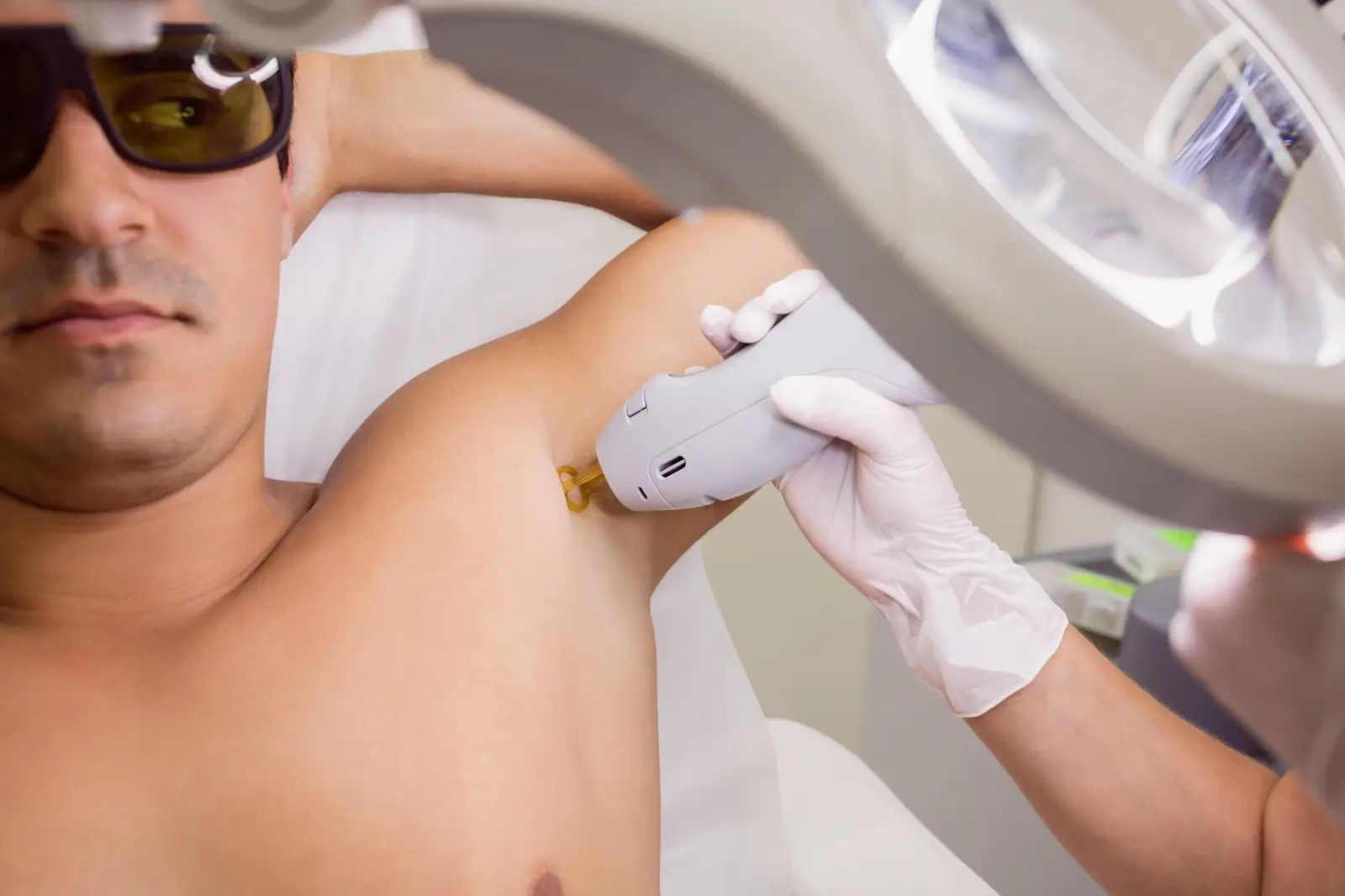Only for Licensed Professionals
Only for Licensed Professionals
.webp)
Can You Use EMLA Cream Before Laser Hair Removal?
David Fuller
Last Updated On: April 14, 2025
Laser hair removal has become a go-to solution for long-term hair reduction, but studies indicate that nearly 60% of patients experience moderate to severe pain during treatment. This discomfort leads many to search for effective numbing solutions that can ease the process without compromising results.
EMLA cream, a topical anesthetic made of 2.5% lidocaine and 2.5% prilocaine, is widely used in medical and cosmetic procedures—from venipuncture to minor dermatological surgeries—due to its ability to block nerve signals and reduce pain. Because of its effectiveness, many people wonder if it can also be applied before laser hair removal to minimize discomfort.
In this article, we’ll explore whether EMLA cream is a safe and effective option for laser hair removal, how it works, and what precautions to take for optimal results and safety.
Key Takeaways
- EMLA cream combines lidocaine and prilocaine to numb the skin and may help reduce pain during laser hair removal.
- Proper application—including a thick layer, occlusive dressing, and 6a 0-minute wait—is crucial for effectiveness.
- Clinical evidence shows good pain control, but side effects like redness or blanching are possible.
- Concerns about laser efficacy and patient feedback while numbed are anecdotal and not yet proven by large-scale studies.
- Always consult a provider before use, especially when treating sensitive skin or large areas.
About: Operating since 2016, Med Supply Solutions is known for being one of the industry’s top and trusted suppliers of cosmetic and viscosupplementation products. Contact our sales department for more information if you want to buy EMLA cream online.

Appropriateness and Effectiveness of EMLA Cream for Laser Procedures
EMLA cream, a topical anesthetic composed of lidocaine (2.5%) and prilocaine (2.5%), is widely used to reduce discomfort during minor medical and dermatologic procedures. Its primary function is to numb the outer layers of the skin, providing temporary relief from pain.
In the context of laser hair removal, EMLA may offer considerable benefits—particularly for areas with heightened sensitivity, such as the bikini line or underarms. However, results can vary between individuals. Some practitioners note that while it does help reduce discomfort, they advise caution with its routine use due to concerns about potential impacts on laser treatment feedback and skin response.
Application Guidelines: Thickness, Duration, and Use of Occlusive Dressings

Achieving optimal numbing with EMLA cream relies on correct application techniques. Patients using the cream prior to laser hair removal should follow these essential steps:
- Clean the area thoroughly with mild soap and water, then pat dry.
- Apply a thick, even layer of cream over the treatment zone.
- Cover with an occlusive dressing, such as plastic wrap, to enhance skin absorption.
- Wait approximately 60 minutes for adequate numbing before the session begins.
- Remove the dressing and cream completely, then cleanse the skin to avoid any interference with the laser.
For individuals wondering how long does EMLA cream take before it starts working?, the onset of numbing typically begins within 30 to 60 minutes, with maximum anesthetic effect occurring between 2 to 3 hours depending on the skin’s thickness and treatment area.
Clinical Evidence Supporting Use in Laser Hair Removal
Studies evaluating the use of EMLA cream in laser hair removal procedures have yielded mixed but insightful results:
- Pain Relief: Research comparing EMLA with topical piroxicam found that both agents were effective in minimizing pain during laser hair treatments.
- Skin Reactions: The same study noted that patients using EMLA experienced more frequent blanching and erythema—signs of skin irritation—compared to those using piroxicam.
- Burn Risk: There have been isolated reports of second-degree burns associated with EMLA use prior to intense pulsed light (IPL) therapy, though such incidents are rare and typically tied to improper use or insufficient skin evaluation.
Potential Impact on Laser Efficacy and Skin Reactions

Some aesthetic providers have expressed concern that numbing agents like EMLA may alter the treatment experience during laser hair removal. Specifically, numbed skin might prevent patients from accurately reporting discomfort, which could otherwise signal that the laser energy is too high. This reduced sensory feedback may slightly increase the risk of burns or overtreatment, especially in darker or more reactive skin types.
Additionally, a few practitioners suggest that numbing the skin could marginally reduce laser effectiveness, potentially requiring extra sessions to achieve the same level of hair reduction.
Best Practices for Patient Education and Preparation
Clear communication between providers and patients is crucial when incorporating EMLA into laser hair removal protocols. Best practices include:
- Consultation: Discuss your treatment plan with a licensed provider to confirm whether EMLA is appropriate for your skin type and procedure.
- Patch Test: Perform a patch test at least 24 hours in advance to screen for allergic reactions or sensitivities.
- Strict Adherence to Guidelines: Use only as instructed, including proper dosage, timing, and occlusive dressing use.
- Skin Observation: Monitor the area for side effects such as itching, redness, or swelling and notify your provider if they persist.
By ensuring patients are well-informed and closely monitored, practitioners can improve both comfort and safety during treatment.
Conclusion
EMLA cream can serve as an effective adjunct for managing laser hair removal discomfort, especially for patients with low pain tolerance or treating sensitive areas. However, its use should be personalized and clinically supervised, particularly due to potential—but rare—skin reactions and practitioner concerns about sensory feedback during the procedure.
While the cream is proven to offer temporary pain relief, users should weigh the benefits against possible limitations, such as variability in effectiveness, skin sensitivity, and treatment outcomes. Consulting a trained provider, following precise application steps, and understanding what to expect can ensure a safer, more comfortable laser experience.
FAQs
1. Can you use EMLA cream before laser hair removal?
Yes, EMLA cream can reduce discomfort during laser hair removal. However, its use should be discussed with your practitioner, as it may affect treatment efficacy and have potential side effects.
2. How long does EMLA cream take to work before laser hair removal?
EMLA cream typically requires about 60 minutes to achieve optimal numbing. Applying and removing it is essential.
3. Are there any risks associated with using EMLA cream before laser hair removal?
Potential risks include skin reactions like redness, swelling, or, in rare cases, burns. Numbing the skin may also decrease the laser’s effectiveness.
4. Should I consult my practitioner before using EMLA cream?
Absolutely. Always consult your healthcare provider or laser technician before using EMLA cream to ensure it’s appropriate for your situation.
5. How should EMLA cream be applied before laser hair removal?
Apply a thick layer of cream to clean, dry skin and cover it with an occlusive dressing (e.g., plastic wrap). Wait 60 minutes before removing the dressing and cleaning the area.
6. Does EMLA affect laser efficacy?
Some practitioners believe numbing creams may slightly reduce laser effectiveness by altering skin sensitivity.
7. What are the common side effects of EMLA cream?
Common side effects include redness, pallor, itching, swelling, and tingling at the application site. Rarely, systemic reactions like methemoglobinemia may occur.
References
Akinturk S, Eroglu A. A clinical comparison of topical piroxicam and EMLA cream for pain relief and inflammation in laser hair removal. Lasers Med Sci. 2009;24(4):535-538. doi:10.1007/s10103-008-0599-2
Guardiano RA, Norwood CW. Direct comparison of EMLA versus lidocaine for pain control in Nd:YAG 1,064 nm laser hair removal [published correction appears in Dermatol Surg. 2005 Dec;31(12):1747]. Dermatol Surg. 2005;31(4):396-398. doi:10.1111/j.1524-4725.2005.31104
Products
Cart
Log In
Newsletter
Subscribe for exclusive offers and updates on new arrivals
Share feedback at:
Working Hours
MON - SUN 9AM to 6PM EST
The Most Popular Brands
Med Supply Solutions
Support
Secure checkout is guaranteed with full adherence to PCI DSS payment standards.
Products listed here are guaranteed authentic and manufacturer-sourced.
Pay easily with trusted providers


*Google and Apple Pay are currently only available via a direct link provided by your account manager.
Copyright 2025. Med Supply Solutions